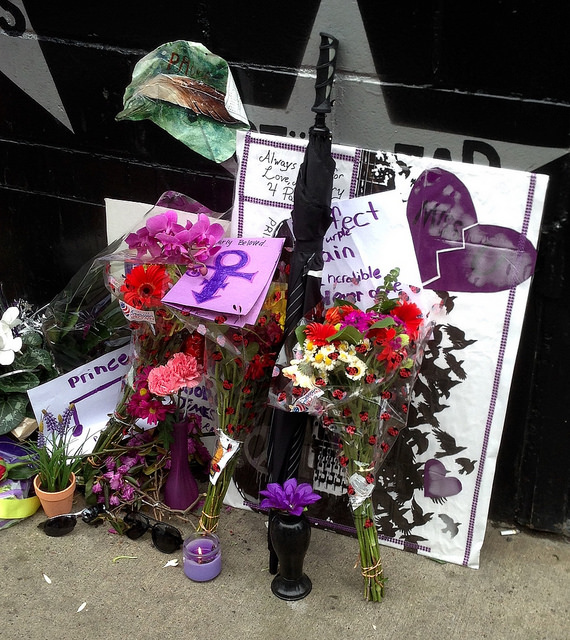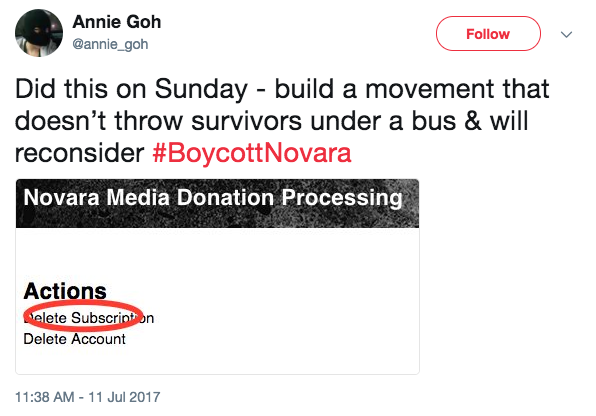When the surprising news of Prince’s death was announced last week, I reflexively moved to post something to social media. And so did a great many of my friends. But we were immediately reminded of just how little material was available for free online. His insistence on being properly compensated for his work had made it hard to mourn him collectively through social media. We still found ways, of course, but the effort required led to a difference experience than the sort to which we had grown accustomed in recent years, perhaps best exemplified after the January passing of David Bowie.
Instead of being able to share a wide range of material, fans were initially forced to repost the same few items that have been circulating for years, such as the black-and-white footage of a 1982 concert in New Jersey. Soon, though, other content started to emerge: clips uploaded from old broadcasts or authorized video releases; playlists of Prince’s music on sites like SoundCloud; and even footage from his recent solo tour.
I wondered, for a time, whether this flood would burst the legal dam that Prince had so assiduously maintained since the early days of social media. Would his legal team, at the very least, recognize the need of his many millions of fans to feel connected in the initial stages of grieving? The answers came swiftly. Within hours, unauthorized posts started to be taken down, just as they had been when he was alive.
As is typically the case, this policing was not perfect. Some posts stayed up much longer than others. And some were reposted so frequently that they remained consistently available, even though the link kept changing. One week later, that remains the case. Although more than half of the posts my friends shared in the immediate wake of Prince’s death had ceased to work within twenty-fours hours, I could still track down replacements with some effort.
It’s that expenditure of time and energy that has turned this period of collective mourning for Prince into something different than its predecessors. At a time when impatience has reached unprecedented levels, his stubborn refusal to let himself be treated the way other performers were has forced his fans to slow down in two different ways. First, when they learn belatedly of content that has since been removed for copyright infringement, they must wait for another opportunity to see or hear it, like a birdwatcher who heads to the location where a transient was spotted in hope of its return. Second, when they get the word that something new is available, they know to stop what they are doing and experience it right away, before it disappears.
In this context, it’s worth asking why people feel such a powerful need to mourn losses collectively on social media. While it is true that the urge to have common experience must, in some sense, underlie all the sharing that people do about public figures, it manifests itself most strongly when they pass away. At times, it can feel as though such occasions for mourning serve a broader purpose, not only allowing people to perceive their individual memories as part of a communal legacy, but also providing them the opportunity to register what has been lost along the pathway to seemingly infinite plenitude.
Experiences of this sort can still happen, of course. The norm, however, is for the time between a person’s first learning about an artist and becoming familiar with her or his work to be collapsed by technology. While short cuts of this kind can save valuable time, it can also have the effect of depriving that person of experiences that can only come about if they are required to spend it. It may be a cliché to state that, “The journey is not the destination,” but that doesn’t make it any less true.
Looking over the posts that have appeared on the Facebook group The Prince Museum in the past week, it is striking how many of them deviate from the standard footage that fans typically share after an artist has passed away. The work of mourning has been displaced, to a degree, onto the sort of material that can be readily shared without fear of it disappearing: stories about Prince’s quiet philanthropy; images from the many tributes that have been taking place around the world; fan art. By necessity, his impact is being commemorated more indirectly than many people would like. Yet that may ultimately make this time more meaningful than if they had been able to share what they wanted with ease.
For those who listened to lines like that in the 1980s, particularly as impressionable teenagers, it was hard not hear within them the spectre of AIDS, which had brought back the memento mori of the Middle Ages with a vengeance. Pleasure itself seemed like an endangered species and Prince the figure who was fighting hardest not to lock it away in a cage for its protection. Things are different now. AIDS remains something to worry about, as do the nuclear weapons Prince also invoked. But possibly the greatest threat to pleasure we face today is the fact that we aren’t willing to wait for it and then prove so impatient when it does come our way that we move on to our next pursuit without letting ourselves register its full impact. It is a fitting tribute to Prince’s legacy that his principled defiance has provided us with a reason to pause, considering whether the prospect of death might help us to live better.
Photograph courtesy of Flickr user Mpls55408. Published under a Creative Commons License





